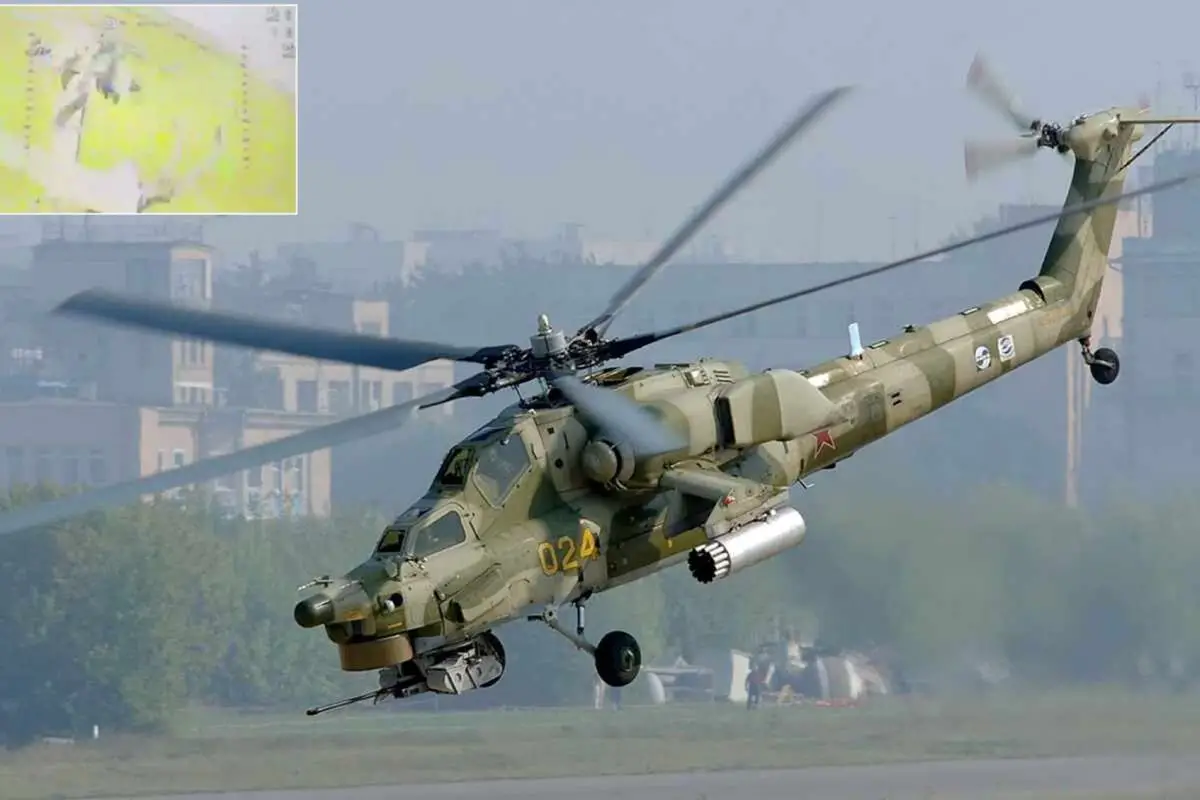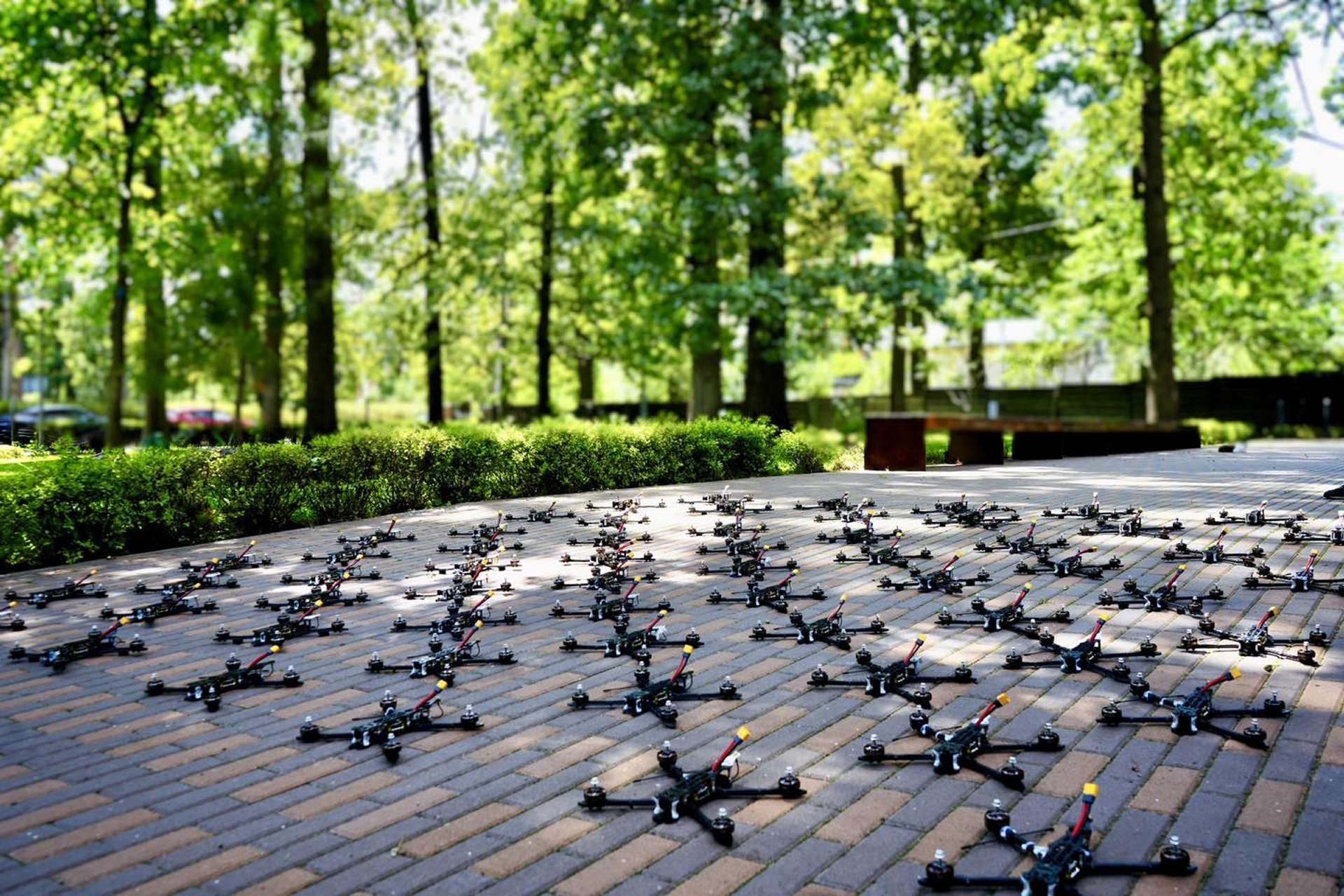Breaking News
Did small Ukrainian FPV drone manage to hit Russian Mi-28 Havoc attack helicopter in mid-flight?.
On August 7, 2024, Andrii Tsaplienko reported that Ukrainian drone operators successfully hit the rear propeller of a Russian Mi-28 Havoc attack helicopter in the Kursk region. If confirmed with aftermath images or video, this incident will once again demonstrate the increasing effectiveness of Ukrainian unmanned aerial systems (UAS), particularly small, inexpensive FPV drones, in targeting high-value military assets. This event is also part of Ukraine's broader strategy to employ various types of drones to disrupt Russian military operations on the ground, at sea, and in the air.
Follow Army Recognition on Google News at this link

Ukrainian drone operators may have successfully hit the rear propeller of a Russian Mil Mi-28 Havoc, an attack helicopter developed in the late 1970s to meet the need for a dedicated attack helicopter superior to the multi-role Mi-24 Hind. (Picture source: Telegram/Andrii Tsaplienko and Russian social media)
Ukraine's deployment of FPV (First-Person View) drones has provided notable tactical and strategic advantages against Russia. According to Euromaidan, between August 2023 and January 2024, Ukraine deployed around 3,886 FPV drones, compared to Russia's 2,889 in the same period. These drones have primarily targeted Russian military vehicles and equipment, maintaining an advantage in daily strikes. The low cost of FPV drones, often as low as $284 for 7-inch models, makes them a practical choice for high-precision strikes. Additionally, research by analyst Volodymyr Dacenko indicates that drones equipped with grenade drop mechanisms or used as single-use munitions are highly cost-effective for destroying enemy infantry and equipment. For instance, targeting infantry with FPV drones can be nearly seven times cheaper than using more advanced systems like the American Switchblade 300.
Despite China's restrictions on exporting drone components, Ukraine has managed to maintain and expand FPV drone production through complex procurement routes and domestic innovation. Although these restrictions complicate procurement, Ukraine's collaboration with Western allies and local manufacturing has allowed for continuous improvements in drone technology and long-range deployment. However, there are concerns about potential escalation and strategic stability, especially with attacks on sensitive targets like the Voronezh-M nuclear early-warning radar station on May 26, 2024.

Ukraine's drone production capacity has grown significantly in 2024, with projections to produce over one million drones by the year's end. (Picture source: Facebook/Anatolii Fedoruk)
For Ukraine, FPV drones offer tactical advantages, especially in trench warfare. Their ability to navigate and strike within confined spaces like trenches and dugouts makes them effective against fortified positions. Ukrainian forces use these drones for offensive strikes and anti-drone operations, engaging Russian UAVs to protect their positions. At a strategic level, Ukraine's long-range drones have successfully targeted locations deep within Russia, including Moscow and critical oil facilities. The strategy is to degrade Russia's military resources and impose economic and psychological costs. Targeting oil refineries and depots disrupts the fuel supply crucial for Russian military operations and impacts the Russian economy, which heavily relies on oil exports.
Therefore, Ukraine's drone production capacity has grown significantly in 2024, with projections to produce over one million drones by the year's end. By early 2024, approximately 200,000 FPV drones had been produced to address artillery shell shortages on the front lines. The production capacity is set to reach up to two million drones of various types, including models like the Bober and Liutyi, capable of long-range precision strikes. This scale-up involves over 200 Ukrainian companies in the UAV sector, with monthly production capabilities of around 150,000 units, providing Ukrainian forces with means to locate and target Russian helicopters such as the Mil Mi-28.

The Russian Mil Mi-28 attack helicopter is heavily armored, with a cockpit that can withstand impacts from 12.7 to 14.5 mm caliber bullets. (Picture source: Russian social media)
The Mil Mi-28, known by its NATO reporting name "Havoc," is a Russian all-weather, day-night, tandem, two-seat anti-armor attack helicopter. Developed in the late 1970s to meet the need for a dedicated attack helicopter superior to the multi-role Mi-24, its first prototype flew in 1982. It was not until the late 1990s and early 2000s that the Mi-28N "Night Hunter" variant, equipped for night operations, entered full production. The helicopter was officially introduced into Russian military service in the mid-2000s, gradually replacing older models like the Mi-24 Hind.
The latest variants, such as the Mi-28NM, feature enhanced stealth, extended operational range, and advanced weapons systems. Export variants like the Mi-28NE have broadened the helicopter's deployment to international operators. Training variants like the Mi-28UB, with dual controls for pilot training, ensure the Mi-28 remains an effective attack helicopter.
The Mi-28 features a conventional pod-and-boom configuration with a five-blade main rotor and a four-blade tail rotor. Powered by two Klimov TV3-117VMA turboshaft engines, each providing 2,200 horsepower, this helicopter can reach speeds of up to 324 km/h. It is heavily armored, with a cockpit that can withstand impacts from 12.7 to 14.5 mm caliber bullets. The Mi-28 is equipped with modern avionics, including a helmet-mounted display for the pilot and a suite of sensors and targeting systems for effective combat performance. The Mi-28's weaponry includes munitions for both air-to-ground and air-to-air engagements.

The Mi-28's performance in Ukraine has been mixed, as Ukrainian forces, equipped with Western-supplied anti-aircraft weapons like the Stinger missile system and the Javelin anti-tank missile, have successfully targeted and downed several Mi-28 helicopters. (Picture source: Twitter/Ukraine Weapons Tracker)
This attack helicopter features a chin-mounted NPPU-28 turret with a 30 mm automatic Shipunov 2A42 autocannon, effective against both armored and soft targets at distances of up to 2,500 meters. Additionally, it can carry up to 16 anti-tank guided missiles, such as the 9M120V Ataka-V, and various unguided rockets, such as the S-13, a 122 mm rocket fired from five-round B-13 rocket pods, and the S-8, an 80 mm rocket fired from 20-round B8V-20 pods. The Mi-28 can also carry IR-guided R-73 air-to-air missiles, Kh-25 air-to-surface missiles, and aerial bombs up to 500 kg.
The Mi-28 has been deployed in various conflicts, notably in Syria and Ukraine, providing close air support and anti-armor capabilities. However, the Mi-28's performance in Ukraine has been mixed, as Ukrainian forces, equipped with Western-supplied anti-aircraft weapons like the Stinger missile system and the Javelin anti-tank missile, have successfully targeted and downed several Mi-28 helicopters, using the urban landscape to set up ambushes.


























